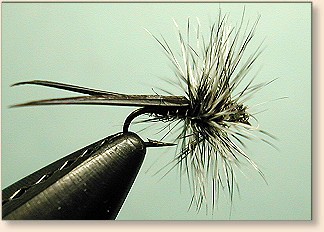F-100
By Cary Morlan, WA
This is a pattern I developed for my local
spring creek. I have found it to be good at
any time of the year. Most of the fishing on
Rocky Ford Creek (WA) is with scuds for there is a
tremendous freshwater shrimp population and the
fish are usually zeroed in on the vegetation awaiting
their next morsel. While I fish scuds frequently I
really like the dry action and will pursue it whenever
I can. One of my most successful patterns was a
Griffiths Gnat. Mostly just a #22 with a thread body
and grizzly hackle. One afternoon a small black stone
landed on the back of my hand while I was fishing, and
I got a good peek at what the trout were actually feeding
on. This fly is more in line with what the natural looked
like. While the stones seem to be seasonal, it also does
an excellent job of imitating the black midges that seem
to be around most of the year. I call it the F-100 because
it's good for a pick up and at least a ½ ton of fun.
Materials List:
Hook: Mustad 94840 size 20-22.
Thread: UNI-Thread 8/0 Black.
Body: Black goose biot.
Hackle: Conranch grizzly tied heavy to float high.
Instructions - F-100:
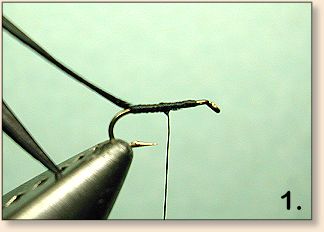
1. Start the thread, wind to rear and tie in
a single goose biot by the small end. They are
easier to wind if they are soaked.
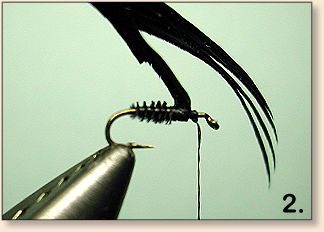
2. Leaving the biot on the stem, wind it forward
about half the hook length and secure and trim.
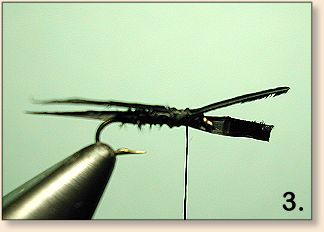
3. Tie in two biots, side by side over the wound
biot. Secure and trim.
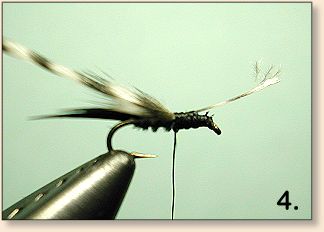
4. Tie in grizzly hackle, wrap forward. I like to
wrap mine heavy so they float high and just give a
suggestion of a silhouette.
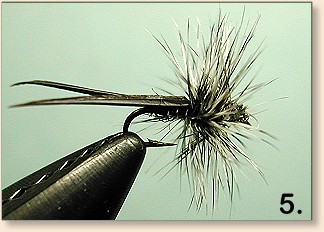
5. Secure hackle, trim and whip or half hitch. I
use a half hitch tool 'cause I'm not as proficient
with a whip finishing tool on these little suckers.
Three half hitches and a dab of head cement (I use
Griffiths Thin) and this little Trucker is ready to
fish.
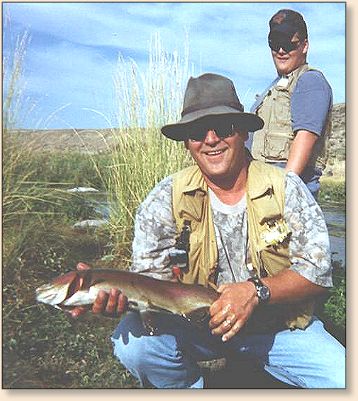
How to Fish the F-100:
This is my go to fly on Rocky Ford Creek. When
they are cruising and sipping in the slow pools,
I cast it about 10-15 feet in front of the fish
and let it set as I take up the slack. The hardest
thing to do for me, when fishing this fly, is to
wait until they sip it before I lift my rod tip.
I have had them swim by only to turn around and
come back for a nibble.
It also fishes well at the head of pools where the
riffles dump in. Fishing the seams first and then
letting it run down the middle.
Remember, on the Ford, fish 'em small, catch 'em all.
~ Cary Morlan (Linemender)
|

